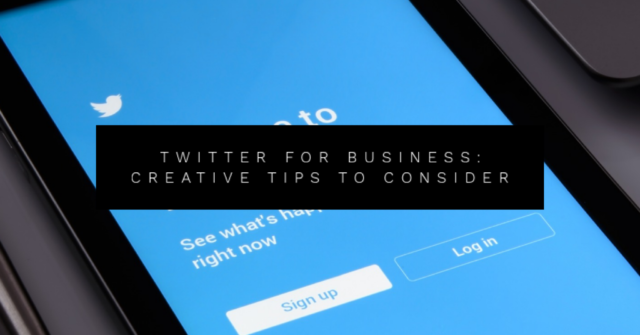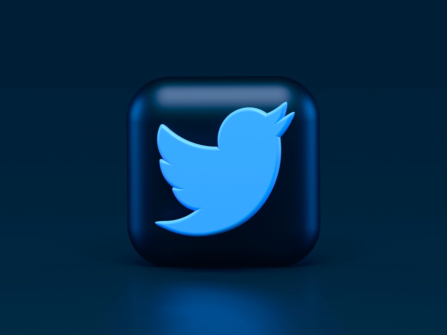Twitter for Business: Creative Tips to Consider

Twitter can be a potent tool for reaching your marketing goals. The set of tips we’ve outlined in this post should teach you about what you can do to create a winning marketing strategy for this popular social media platform.
With 356 million monthly active users in Q3 2020, Twitter should absolutely be a part of your marketing strategy. Although it is currently only the fifth most popular social network, it is still a hugely important hub when it comes to building your brand, winning new fans and driving sales, as well as collecting customer insights.
With around 6,000 tweets sent every second, you need to be savvy and strategic if you hope to win your audience’s attention. If you’re not sure where to begin, it’s always a good idea to hire an agency providing creative branding services.
That said, we have all the tips you need to build a robust Twitter marketing strategy right here.

Tips to Create a Powerful Twitter Marketing Plan
Each social media platform requires a separate plan of action, so if you thought you could use your Facebook or Instagram strategy, think again. Understanding how Twitter works and how it fits your social media strategy as a whole is vital.
Where do you start? Here are the steps to building a strong foundation for your Twitter marketing approach.
Review Your Accounts
If your company or brand, like Nacero, for example, already has one or more Twitter accounts., it is time to document and review them. Also, focus on which team member(s) had access to the accounts and the results they managed to achieve so far.
Once you have your list, perform a thorough audit. Try to answer the following questions first:
- – How many followers does each account have?
- – What is the engagement rate for each account?
- – How frequently has each of the accounts tweeted?
You can use Twitter Analytics to collect these metrics.
After reviewing the data, focus on the brand compliance of your existing accounts. Are your profile picture and bio on-brand? Do you have the same handle on Twitter as you do on other social media platforms? Is your header image advertising an outdated promotion?
Once you’ve gathered all the information on your existing accounts, you’ll have a much better idea of your Twitter performance so far. This will serve you well in the next stage of the process.
Set Clear Goals
Success in any personal and business aspect, social media marketing included, begins with setting measurable goals. Unless you make what you’re trying to achieve clear, you can never know whether your plan is making the impact you hope for.
The trick here is making your goals SMART — and we’re not belaboring the obvious. We should point out that SMART is an acronym for the following attributes:
- – Specific
- – Measurable
- – Attainable
- – Relevant
- – Time-bound
This means that merely setting “more website visitors” as a goal will not cut it. The goals must be broken down into clear and measurable indicators of success while aligning with your high-level objectives. Think big — act small.
Let’s see how we can turn that non-specific goal we used as an example above into a SMART plan for your Twitter campaign.
First, you should establish your current click-through rate. You should be able to find this in the data we covered in the previous step. Then, set an achievable goal over a measurable amount of time — for example, a 1% increase within the next month.
Pay Attention to Your Competitors
When it comes to personal development, we often hear that we shouldn’t compare ourselves to others. While this is good advice, it doesn’t always apply to the world of business.
Don’t be afraid to take a closer look at your industry competitors’ Twitter accounts. Analyzing their Twitter and other social media accounts will enable you to find holes and weaknesses in your own strategy. You can also see what you’re good at compared to your competition and play your strengths.
Assign Roles
Your accounts should be active and monitored at all times, and someone should always be responsible for replying to mentions and direct messages. Twitter moves fast, so your followers will notice if you’re not checking in as often as you should. This could damage your Twitter presence, and in turn, your brand’s reputation.
Big companies with busy accounts often need multiple team members to monitor them. Individual team members will often sign their names in these tweets to provide a personal touch to the experience.
If your company is not huge, you can probably get away with one person handling your Twitter account, but you should still make sure to assign a back-up, so there are never any gaps in coverage.
Like in any other aspect of a business, everyone must be clear on their responsibilities. Suppose you have multiple team members responding to the same tweets. In that case, you could run into an entirely different set of problems, including redundant and conflicting answers, not to mention overall confusion.
Create Social Media Communication Guidelines
Keeping your communications consistent across platforms regardless of which team member is handling them will require a clear set of guidelines. These will also help onboarding new team members, preventing any unfortunate mistakes and social media blunders.
The content guidelines will differ depending on your situation and may include your audience, tone, and general style guide. The important thing is that the guide is shared with everyone on your team.
Here are some ideas on the topics you can include in your social media communication guidelines:
- Formatting links and URLs
- The usage of emojis, gifs, and other forms of non-textual language
- How to use branded hashtags
Twitter is home to all kinds of conversations. You’ll likely run into some weird situations and unfounded criticism, so it’s good to be prepared. It is much better to have a set of resources you never need than the other way around.
Make a Social Media Marketing Roadmap
Having a social media roadmap or marketing calendar can be very useful. It will allow you to spot potential conflicts and gaps and align the content across your social media channels. It also gives you the chance to plan content based on important holidays, like celebrating your female team-members on International Women’s Day or posting about your environmental initiatives on Earth Day.
A calendar will also make it easier to see if your tweets are varied enough, something that is easy to overlook when posting day-by-day. Try to follow the rule of thirds — 1/3 insights from experts in your field, 1/3 personal stories, and 1/3 promoting your business.
Measure Your Success Continuously
Once you put your marketing strategy in motion, make sure to regularly evaluate your efforts and measure your progress against the goals you set in step two of this guide.
Just like in the first step, there will be a ton of metrics you will have access to, including some that don’t always mean much. Therefore, it is crucial to consider which pieces of data really matter to your particular strategy.
Posting a funny gif and getting lots of retweets will make your social media account manager feel great, but it won’t necessarily translate to sales or conversions.
Show the results of all your marketing efforts by collecting meaningful metrics. This will provide the necessary insights and help you adapt and improve your strategy as your brand develops.
Author bio:
Tomas is a digital marketing specialist and a freelance blogger. He is focused on new web tech trends and digital voice distribution across different channels.